The Kamala Club: Planting the Seeds of a Pioneering Women’s Organisation
Vandana Aggarwal traces the origins of a venerable association for Indian women and the role it played in their lives.
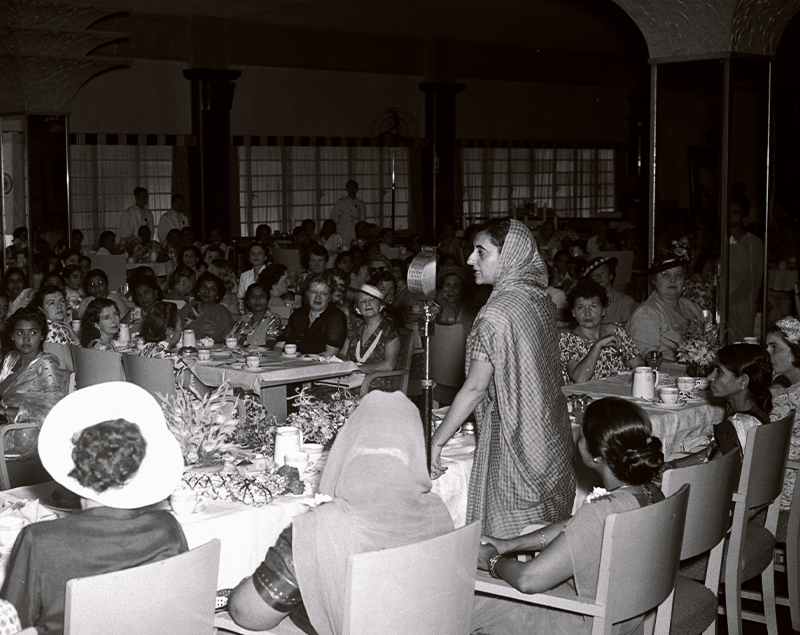
For over six decades, one organisation has been playing an important role in bringing women from the Indian subcontinent together in Singapore: the pioneering Kamala Club. Through social gatherings, festive celebrations and enrichment classes, this club gave South Asian women the chance to meet, socialise and learn in a secular setting. While festive events and enrichment classes have slowed down because of the Covid-19 pandemic, the Kamala Club (kamala means “lotus” in Hindi) continues to serve its members through an online community with over 1,200 followers, highlighting cultural events, organising guided tours to places like the Indian Heritage Centre and even online yoga sessions for women.
Clubs for Women
While the Kamala Club was established in the 1950s, its roots actually go further back – to two women’s organisations that sprang up in the early 1930s: the Lotus Club and the Ladies’ Union. In 1930, the Indian and Ceylonese Ladies’ Club was launched under the auspices of the Young Women’s Christian Association (YWCA) and was renamed the Lotus Club the following year. A second association, the Ladies’ Union, was set up in 1931.
These clubs, which began as social clubs, were important vehicles for the advancement of Indian women in Singapore. At the time, the traditional Indian woman’s role was home-bound, and some women were even customarily shielded from the gaze of men whom they were not related to. The clubs also gave women who came from different parts of the Indian subcontinent a chance to connect with other women of their community. At the same time, it allowed these women to meet with women of different backgrounds, castes and creeds. From educating women on childcare, health and hygiene, and providing a venue for relaxation, these clubs also carried out fundraising for charitable causes, organised educational talks and provided a platform for women to hone their leadership skills.
The idea for an organisation for Indian women to meet regularly had been mooted by the famous Indian poet, philosopher and writer Rabindranath Tagore during a visit to Singapore in 1927.1 (While an Indian Association existed at the time, it mainly catered to men.)
In November 1930, Mrs Edward Vethanayagam Davies (also known as Checha Davies)2 and Mrs John Truman Navaratnam Handy3 invited women from various Indian and Ceylonese groups in the community to a reception at the YWCA and explained to them the rationale behind setting up an association just for them.4
As there was enough interest, the Indian and Ceylonese Ladies’ Club was launched in December 1930 under the auspices of the YWCA. The club’s objective was to “bring together the women of these communities in some creative activities, in recreation and in friendliness, at the same time developing the qualities of leadership lying dormant in so many women”.5 As women from the Persian, Arab and Malay communities began joining, the association was renamed Lotus Club in 1931 to better reflect the diversity of its members.6
Membership increased and included prominent members of Singapore society such as Mrs Mirza Mohammed Ali Namazie and Mrs Rajabali Jumabhoy.7 By 1932, the Lotus Club had 100 members speaking about 15 different languages and representing the major religions of India and Malaya.8 At gatherings and events, “it was sometimes necessary to address the members in no fewer than seven languages”.9
Mrs Kizhakke Mukkapuzha Raman Menon (also known as Amala Menon),10 honorary secretary of the Lotus Club, attributed the club’s popularity to thefact that it met the social needs of its members. She said: “The popularity of the club is demonstrated by the way the educated and well-to-do ladies patronise it. The club has been the means of bringing together many ladies who would never have met each other otherwise and possibly never have enjoyed the pleasures of social life.”11
Although the Lotus Club appeared to be a success, a rival organisation – the Ladies’ Union – helmed by Mrs Bridget Catherine Beatrice Chelvanathan Handy12 was launched in 1931. In a pointed reference to the affiliation of its rival club to the YWCA, Mrs Handy said: “[T]he Ladies’ Union is the first independent organisation in Malaya started and run entirely by Indian and Ceylonese ladies. The Union is in no way connected with any other association, religious or otherwise, and tolerance and mutual help are its watchwords.” The club proudly declared that it would be run on “independent and pucca Indian lines” (pucca means “staunch” in Hindi).13 To attract women from all walks of life, membership was kept affordable at 25 cents per month or $3 for an annual subscription.14
At the time, the Lotus Club, which comprised women from more affluent families, was looked upon as a club for the elite while the Ladies’ Union was considered its poorer cousin.
Naturally, the setting up of two similar clubs raised some eyebrows. In a letter published in the Malaya Tribune, a reader wrote: “As an Indian earnestly interested in the welfare and advancement of the ladies of my community, I would request the members of both organisations not to introduce the competitive spirit, but to work together in a spirit of co-operation and sisterliness… if there is lack of understanding and intolerance on their part, both will disrupt the life of the community and prove a curse instead of a blessing.”15
In the early years, the rivalry between the two clubs was keen. The Lotus Club celebrated its first anniversary in February 1932 by inviting Lady Clementi, wife of then Governor and Commander in Chief of the Straits Settlements Cecil Clementi to a reception and designated her “godmother” of the club.16 Not to be outdone, the Ladies’ Union also invited Lady Clementi to its first anniversary garden party in 1932. She was subsequently made the club’s patroness.17
In a bid to play peacemaker, Lady Clementi proposed at the end of 1933 that the “Lotus Club and the Ladies’ Union be amalgamated, but at the meeting between the presidents and secretaries of the two institutions, the representatives of the Lotus Club said the proposal would not be approved by their club”.18
The two clubs continued to consolidate their respective positions in society. While the Lotus Club used the facilities at the YWCA for its activities, the Ladies’ Union managed to secure “a piece of land on the Balestier plain, which ha[d] been levelled and enclosed by zinc sheets” in 1932. As the land was big enough to construct a clubhouse with tennis and badminton courts, the Ladies’ Union initiated a building fund for a new clubhouse.19 So as not to lose out, the Lotus Club also hoped to have “its own home” and started a building fund in 1934.20
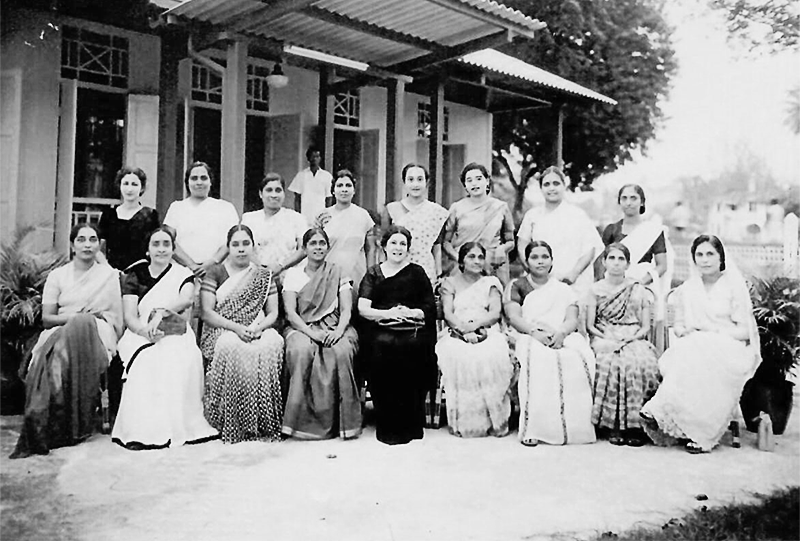
Bringing Women Together
Rivalry notwithstanding, the Lotus Club and the Ladies’ Union played an important role in the lives of Indian women in Singapore at the time. Mrs Lakshmi Naidu, a founding member of the Ladies’ Union, recalled in a 1982 oral history interview: “Those days, our Indian ladies, they don’t go anywhere, they don’t mix with people, they always stay at home. That’s why we brought [them] outside and [taught] them sewing, making paper flower, then once in a [while] we [get] doctors or somebody to lecture them.”21
Events organised by these two clubs also created opportunities for women who practised purdah to take tentative steps outside the home. Purdah is a religious and social practice of female seclusion. Among other things, it involves physical segregation from men unrelated to them through the use of walls, screens and curtains. In May 1935, to celebrate the Silver Jubilee of King George V’s accession to the throne, the Lotus Club organised a dinner where male guests were invited for the first time to the club’s event. Because several women still practised purdah, special planning was required.22 The dinner was hailed as an attack on “the citadel of orthodoxy and social customs which impose isolation on Asiatic ladies”.23

Beyond social events like dinners and outings, the women became involved in charity work, and organised bazaars and funfairs to raise funds. In September 1933, proceeds from a charity sale held by the Ladies’ Union went to the Child Welfare Society and Leper Asylum.24 Similarly, the Lotus Club organised a fete in October that year that managed to raise $800. Half was put aside for the building fund and the other half used to help unemployed Indians in the community.25 In June 1935, the Lotus Club, together with the Indian Association, organised a charity concert at the Victoria Theatre in aid of the Quetta Relief Fund for an earthquake that devastated Quetta, in today’s Pakistan, in May of that year.26
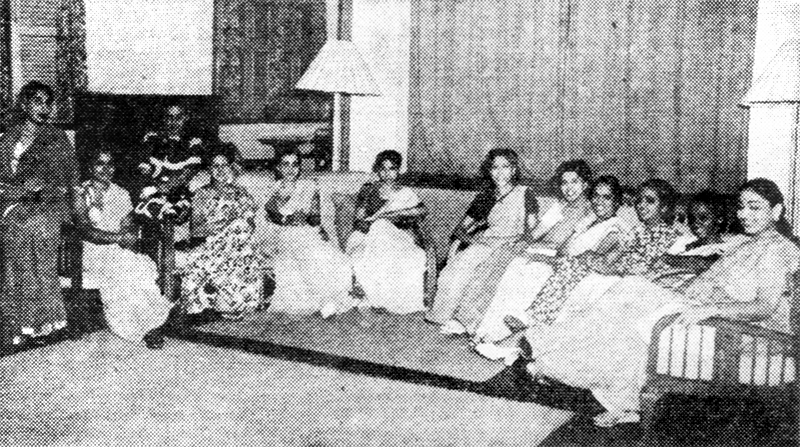
These women’s organisations also provided opportunities for cultural activities. In 1932, members of the Lotus Club came together to form an orchestra. The orchestra performed at the charity concert presented by the Lotus Club in aid of the Jubilee Fund in October 1935. The concert also included plays and dance performances by other club members.27 The Ladies’ Union organised its own variety show for the Jubilee Fund. Members performed songs in Telegu, Hindustani, Tamil and Hindi; presented dances; and put up sketches and plays. The women even took on the male roles in the plays.28
The clubs also organised educational talks that ran the gamut of subjects from childcare to the role of women at home and in society. Among the speakers was freedom fighter and future Prime Minister of India Jawaharlal Nehru, who visited Singapore in 1937. In his talk, he urged the members of the Ladies’ Union to be independent. “We want women with self-reliance, character and beauty, but we do not want dolls to play with,” he said. “A country is judged by the standard of its womenfolk. If they are backward and illiterate then their country is no good, no matter what their menfolk may be.”29
Some women took Nehru’s advice to heart, especially in the post-war years. In 1948, Mrs Malathi Pillai of the Ladies’ Union and secretary of the Singapore Regional Indian Congress became the first woman to contest the Singapore Legislative Council election.30 Two years later, Mrs Mary Lobo of the Lotus Club was appointed a Justice of the Peace.31 In 1954, Mrs Lakshmi Naidu was awarded the Singapore Certificate of Honour for her voluntary work during and after the Japanese occupation.32 These Indian women, unlike their predecessors who led cloistered lives, were defining a new public role for themselves, and it is likely that their activities in the Ladies’ Union and the Lotus Club helped them prepare for a larger stage.
Amalgamation of the Clubs
The Lotus Club and the Ladies’ Union were dormant during the Japanese Occupation (1942–45) but when peace returned, the clubs once again resumed their social, cultural and fundraising activities. One of the highlights of the post-war era occurred in June 1950 when Nehru, by then the prime minister of newly independent India, visited Singapore again. During his visit, his daughter Indira Gandhi addressed a joint meeting of the two clubs and, citing her mother as an example, spoke about the important role of women in society. Nehru himself graced the occasion and addressed the women briefly.33
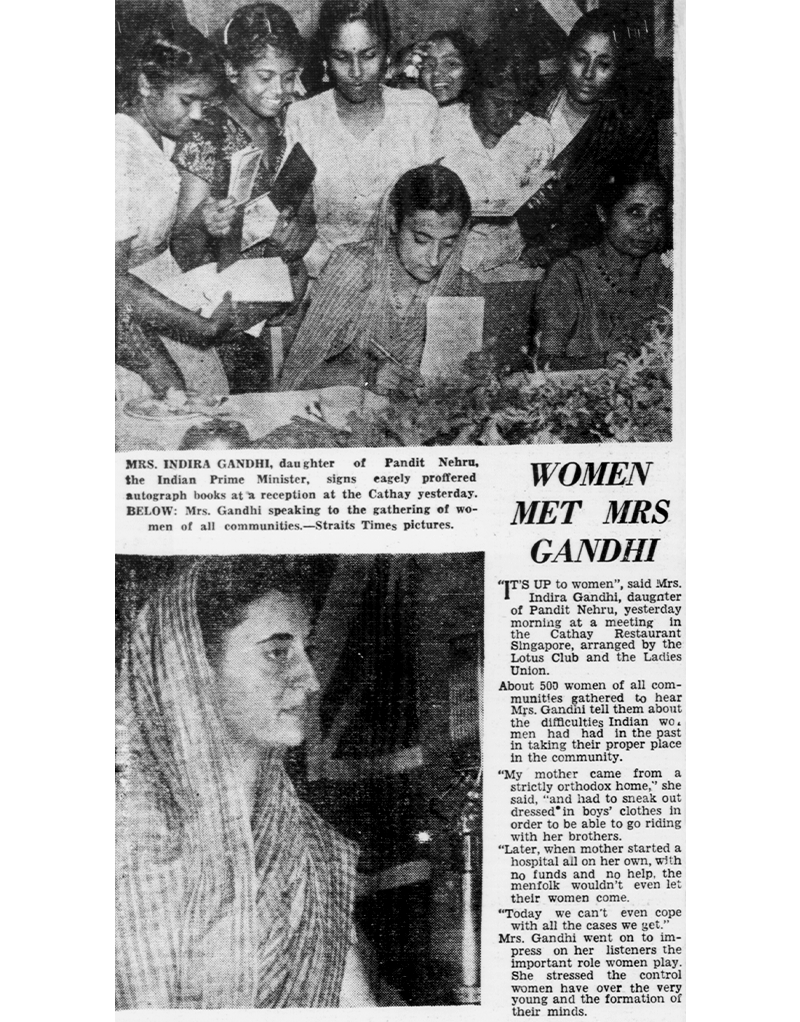
Gandhi’s talk at the joint meeting was a precursor to the eventual merger of the Ladies’ Union and the Lotus Club, which was decided on 17 October 1950.34 The motives were practical ones. “The harsh reality was that both the clubs were struggling with low membership, as many of the women had moved back to India after the war. The founding members were older, and to survive, the clubs had to merge into one unit.”35
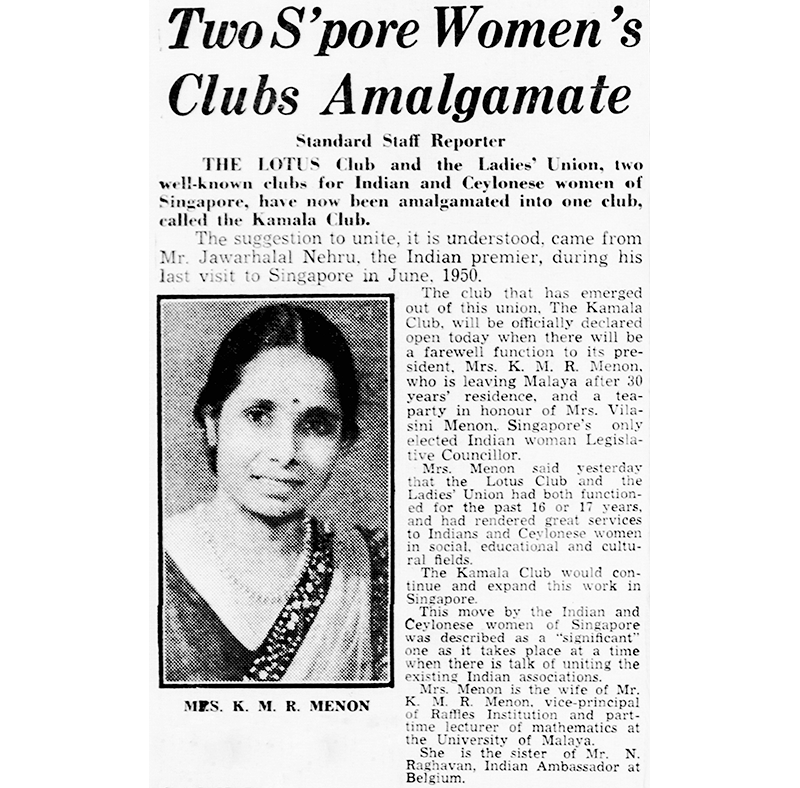
The new club was named Kamala Club, ostensibly at the wish of Nehru, after his late wife Kamala.36 But according to Ambassador-at-Large Gopinath Pillai – whose mother was present at the meeting to merge the two clubs – Nehru had not made any suggestions regarding this. Citing Nehru, however, made the new name more palatable to members.37
The Kamala Club was officially declared open on 21 May 1951 and since then, the club has helped countless Indian women develop warm friendships with other like-minded women.38 Its members continue to work together to make a difference. Like the lotus flower it is named after, the Kamala Club has blossomed and remains relevant today.

 Vandana Aggarwal is a teacher and a freelance journalist. An active citizen archivist for the National Archives of Singapore, she is the author of Indian Women: The Kamala Club Singapore (2018). She enjoys reading and researching about history.
Vandana Aggarwal is a teacher and a freelance journalist. An active citizen archivist for the National Archives of Singapore, she is the author of Indian Women: The Kamala Club Singapore (2018). She enjoys reading and researching about history.NOTES
-
“Indian And Ceylonese Ladies,” Singapore Free Press and Mercantile Advertiser, 3 June 1931, 12. (From NewspaperSG) ↩
-
At the time, Indian women were referred to by their husband’s name. Mrs Edward Vethanayagam Davies moved to Singapore after her marriage in 1925. She was an educator, social worker and advocate of women’s rights. Apart from the Lotus Club, she was also a founding member of the Inner Wheel Club of Singapore and was closely involved in the establishment of the Singapore Council of Women where she served in its executive council. Mrs Davies was posthumously inducted into the Singapore Women’s Hall of Fame in 2014. ↩
-
Not to be confused with Mrs Ellice Handy, Mrs John Truman Navaratnam Handy was a socially active Ceylonese lady of Tamil descent. ↩
-
“Singapore Y.W.C.A.,”Malaya Tribune, 15 November 1930, 14. (From NewspaperSG) ↩
-
“Work of Y.W.C.A. in Singapore,” Malaya Tribune, 24 July 1931, 13. (From NewspaperSG) ↩
-
“Indian and Chinese Women,” Malaya Tribune, 30 July 1931, 9. (FromNewspaperSG) [Mirza Mohammed Ali Namazie was a Persian businessman who commissioned and financed the Capitol Theatre. Rajabali Jumabhoy was a prominent businessman and one of the founders of the Indian Association; he was also a member of the Legislative Assembly.] ↩
-
“Indian Ladies’ Club,” Straits Times, 6 March 1932, 10. (From NewspaperSG) ↩
-
“Indian Women’s Social,”Malaya Tribune, 3 February 1932, 7. (From NewspaperSG) ↩
-
Mrs Kizhakke Mukkapuzha Raman Menon, originally from Kerala, played an active part in club activities even after the clubs had merged and became the Kamala Club. Her husband K.M.R. Menon was a mathematics teacher at Raffles Institution. ↩
-
Mrs K.M.R. Menon, “Emancipation!” Malaya Tribune, 18 April 1931, 3. (From NewspaperSG) ↩
-
Mrs Bridget Catherine Beatrice Chelvanathan Handy was a Sri Lankan and moved to Malaya at a young age. She had travelled extensively and was an advocate of women’s rights. Her husband, Dr J.M. Handy, was one of the first medical men to come from Jaffna, Sri Lanka, at the invitation of the British government in Singapore. ↩
-
Mrs Lakshmi Naidu, oral history interview by Tan Beng Luan, 17 December 1981, transcript and MP3 audio, Reel/Disc 8 of 11. (From National Archives of Singapore, Accession no. 000110) ↩
-
R.R. Samy, “Woman’s Corner,”Malaya Tribune, 18 July 1931, 2. (From NewspaperSG) ↩
-
“Indian Women’s Social,” Malaya Tribune, 3 February 1932, 7. (From NewspaperSG) ↩
-
“Ladies’ Union,” Malaya Tribune, 8 April 1933, 9. (From NewspaperSG) ↩
-
“The Ladies Union,” Malaya Tribune, 10 March 1934, 13. (From NewspaperSG) ↩
-
“Ladies’ Union.” ↩
-
The Lotus Club,” Malaya Tribune, 13 December 1934, 16. (From NewspaperSG) ↩
-
Mrs Lakshmi Naidu, oral history interview by Tan Beng Luan, 24 February 1982, transcript and MP3 audio, Reel/Disc 9 of 11. (From National Archives of Singapore, Accession no. 000110) ↩
-
Britannica, The Editors of Encyclopaedia, “purdah,” Encyclopedia Britannica, 9 May 2008, https://www.britannica.com/topic/purdah. ↩
-
“Lotus Club,” Straits Times, 13 May 1935, 12. (From NewspaperSG) ↩
-
“For Charity,” Straits Times, 28 August 1933, 12. (From NewspaperSG) ↩
-
“Lotus Club,” Singapore Free Press and Mercantile Advertiser, 8 February 1934, 3. (From NewspaperSG) ↩
-
“Amateur Talent at Victoria Theatre,” Straits Times, 29 June 1935, 13. (From NewsppaerSG) ↩
-
“Jubilee Fund,” Malaya Tribune, 7 October 1935, 18. (From NewspaperSG) ↩
-
“Variety Show for Jubilee Fund,” Straits Times, 26 October 1935, 17. (From NewspaperSG) ↩
-
“‘A Country is Judged by Its Women Folk’,” Singapore Free Press and Mercantile Advertiser, 29 May 1937, 6. (From NewspaperSG) ↩
-
“Indian Quit Congress for Polls,” Straits Times, 22 January 1948, 1. (From NewspaperSG) ↩
-
“Mrs. Mary Lobo Appointed J.P.,” Indian Daily Mail, 7 April 1950, 4. (From NewspaperSG) ↩
-
“Singapore,” Straits Times, 10 June 1954, 1. (From NewspaperSG) ↩
-
“Women Met Mrs Gandhi,” Straits Times, 19 June 1950, 5. (From NewspaperSG) ↩
-
“Kamala Club Formed,” Indian Daily Mail, 20 October 1950, 4. (From NewspaperSG) ↩
-
Vandana Aggarwal, Voice of Indian Women: The Kamala Club Singapore (Singapore: The Kamala Club, 2018), 29. (Available via PublicationSG) ↩
-
“Singapore Women Entertain Mrs Indira Gandhi,” Indian Daily Mail, 19 June 1950, 1. (From NewspaperSG) ↩
-
Aggarwal, Voice of Indian Women, 30 ↩
-
“Two S’pore Women’s Clubs Amalgamate,” Singapore Standard, 21 May 1951, 2. (From NewspaperSG) ↩

